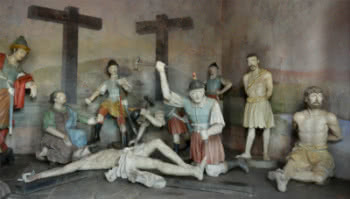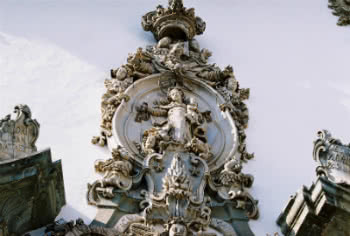Outside the Western world, artistic development also took place intensely and with various cultural exchanges. From the region of Anatolia (part of present-day Turkey), in Asia Minor, to the Far East, where the Chinese and Japanese civilizations developed, the artistic development was impressive. One of the notorious examples is the Islamic art.
With the foundation of Islam by the prophet Mohammed in the seventh century, many peoples living in the Arabian Peninsula, Persia and Asia Minor, as well as, later, in North Africa, were unified around the new religion. Arabic became the sacred language of Muslims and also a source of artistic expression.
One of the first manifestations of Islamic art, architecture, flourished above all in the construction of temples, that is, the mosques. The architectural complex of the mosques mainly involved the construction of an interior with sumptuous decoration, expressed in the arabesques (drawings in harmonic geometric shapes), and in the Arabic calligraphy, with excerpts from Quran.
But Islamic art had its most striking expression in two segments and followed two branches of Islamic civilization itself: the safavid and Ottoman. The Safavids came to dominate the region of Persia (present-day Iran) from the year 1501, under the leadership of Ismail. Over time, the Safavid empire expanded northward, occupying regions such as present-day Afghanistan, south of the Arabian Peninsula, and east, towards present-day Pakistan.
This empire bequeathed a vast artistic production to posterity, standing out in paintings, including the representation of forms humanities (a fact not found in other branches of Islamic art), and an extraordinary tapestry, with arabesques and inscriptions calligraphic. Among the most famous rugs of the Safavid Persians is the Ardabil rug, as the art historian highlights Stephen Farthing:
Do not stop now... There's more after the advertising ;)
[...] the Safavids represented living beings in their artwork, and the presence of people and animals became a distinct feature of the style in illuminations, as can be seen in Rostam sleeping while Rakhsh faces the lion. Intricate floral arabesques were an equally important feature in Safavid art, particularly in the abundant production of fabrics and rugs. 16th century Persian rugs are some of the most sumptuous ever produced. Among them, the carpet of Ardabil (1539-1540), which is signed Maqsud of Kashan, 946, reigns supreme.” [1]
already the ottoman style prevailed in Central Asia, Eastern Europe and North Africa, given that this was the extension of the Ottoman Empire, which was raised from 1453, when there was the fall of Constantinople. The traces of Ottoman art mixed the typically Arab legacy with Byzantium techniques, with the style timurid, with the art of the Balkans and with what was done on the shores of the Mediterranean, especially in Venice. In addition, there was also the influence of Mongolian and Chinese art, as the historian Farthing also attests:
“[…] ceramic designs were influenced by Chinese porcelain, and stylized patterns of plants and flowers were most frequently used, especially in the admired Iznik pottery. Calligraphy and drawings with geometric lines were mainly restricted to architectural decoration. In the 19th century, Iznik ceramics were collected in the West and served as a source of inspiration for various artistic styles of the 19th and 20th centuries, especially the Arts & Crafts movement”. [2] P. 195.
GRADES
[1] Farthing, Stephen. all about art. Rio de Janeiro: SEXTANTE, 2011. P. 194-195.
[2] Idem. P. 195.
By Me. Cláudio Fernandes


